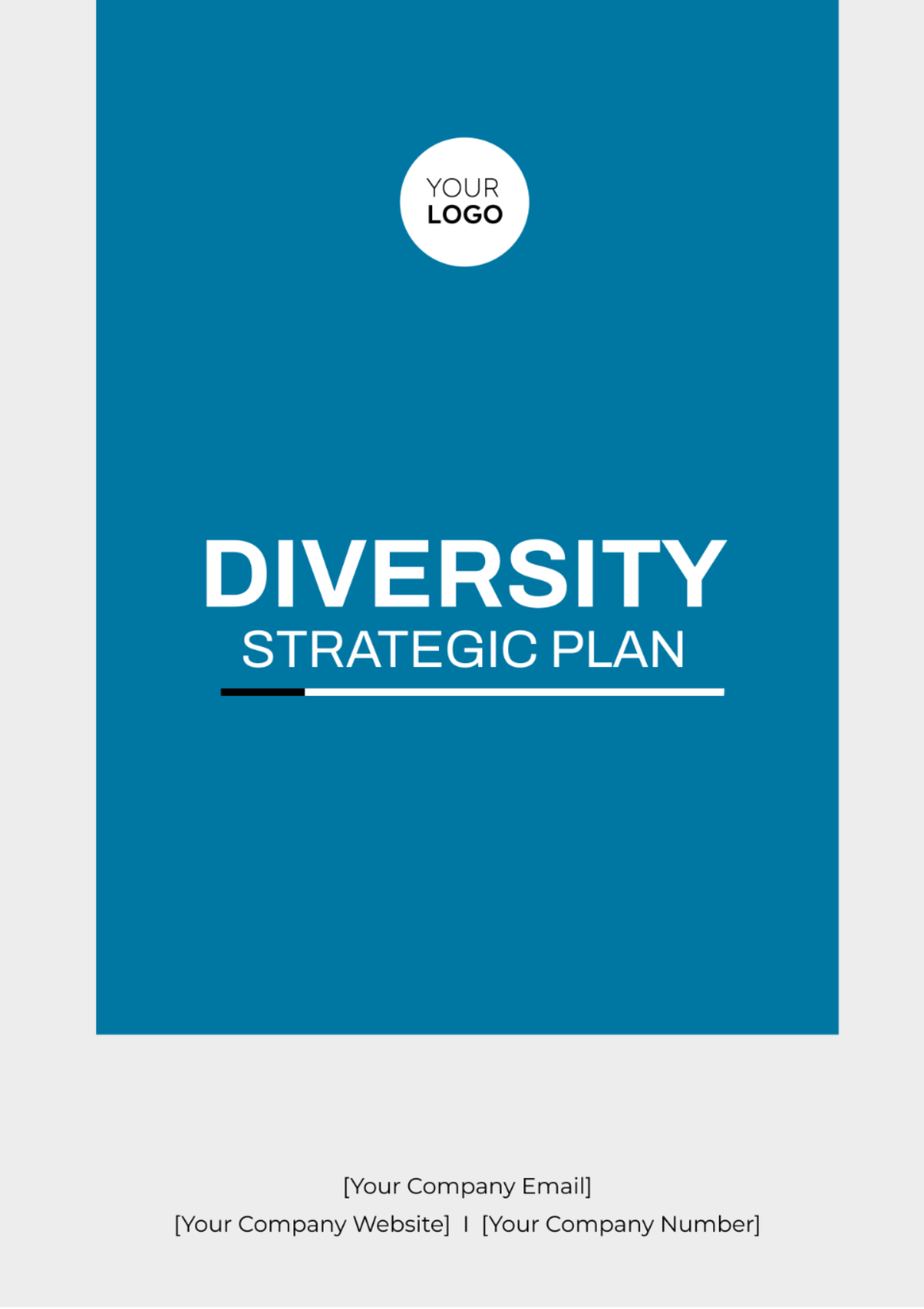Diversity Strategic Plan
Prepared by [YOUR NAME]
I. Executive Summary
This strategic plan outlines [YOUR COMPANY NAME]'s commitment to fostering diversity and inclusion within the workplace through the development and implementation of comprehensive training programs. Our goal is to cultivate an inclusive culture where every employee feels valued and respected.
II. Vision and Mission
A. Vision Statement
To cultivate an inclusive environment where diversity is celebrated, enriching our corporate culture and driving our company's success.
B. Mission Statement
To equip [YOUR COMPANY NAME] employees with the knowledge and skills needed to champion diversity and inclusion at all levels of the organization.
III. Situational Analysis
A. Current State of Diversity in [YOUR COMPANY NAME]
Data: As of [DATE], [YOUR COMPANY NAME] has a workforce comprising:
45% female, 55% male employees.
20% employees from diverse racial and ethnic backgrounds.
10% employees with disabilities.
Information: Current diversity and inclusion initiatives include:
Diversity training during onboarding.
Employee resource groups for various affinity groups.
Quarterly diversity town hall meetings.
B. Employee Feedback
Data: Employee surveys conducted in [MONTH, YEAR] indicate that:
Information: Key themes from employee feedback include:
IV. Goals and Objectives
Our goals and objectives are designed to guide the development and execution of diversity training programs:
Enhance employee understanding of diversity and inclusion principles.
Reduce instances of workplace discrimination and harassment.
Foster an inclusive workplace culture where all employees feel valued and respected.
V. Strategies and Actions
A. Curriculum Development
Details: Develop a comprehensive training curriculum including:
Principles of diversity and inclusion.
Real-world scenarios and role-play exercises.
Guidelines for promoting inclusive language and behavior.
Data: Curriculum development will be led by the Diversity and Inclusion Committee, with input from external diversity consultants.
Information: Curriculum will be reviewed and updated annually to ensure relevance and effectiveness.
B. Implementation Plan
Details: Implement training sessions in [MONTH, YEAR], with sessions held quarterly thereafter.
Data: Anticipated attendance of 200 employees per session, totaling 800 employees trained annually.
Information: Training sessions will be mandatory for all employees, with make-up sessions available for those unable to attend.
C. Evaluation and Iteration
Details: Evaluate training effectiveness through pre- and post-training surveys, with a focus on changes in attitudes and behaviors.
Data: Surveys will be administered by the HR department and analyzed by the Diversity and Inclusion Committee.
Information: Feedback from evaluations will be used to make improvements to the training curriculum and delivery methods.
VI. Budget
Details: Estimated budget for the first year of implementation is $50,000, including:
$20,000 for curriculum development.
$15,000 for facilitator fees.
$10,000 for training materials.
$5,000 for venue and logistics.
Data: Budget allocation approved by the Executive Board on [DATE].
Information: Budget will be reviewed annually to ensure alignment with organizational goals and objectives.
VII. Stakeholders
Details: Key stakeholders involved in the implementation of the diversity training programs include:
Executive Leadership Team.
HR Department.
Diversity and Inclusion Committee.
External Diversity Consultants.
Information: Each stakeholder group will play a critical role in supporting the implementation and success of the Diversity Strategic Plan.
VIII. Risk Management
Details: Identified risks to the successful implementation of the diversity training programs include:
Data: Risk assessment conducted in [MONTH, YEAR] by the Diversity and Inclusion Committee.
Information: Mitigation strategies include:
Employee engagement initiatives to address resistance.
Executive sponsorship to ensure leadership buy-in.
Regular budget reviews to address financial constraints.
IX. Conclusion
This strategic plan underscores [YOUR COMPANY NAME]'s dedication to nurturing a diverse and inclusive workplace. By investing in targeted training and comprehensive strategies, we aim not only to comply with regulations but also to build a culture that celebrates diversity as a fundamental driver of success.
Plan Templates @ Template.net






























